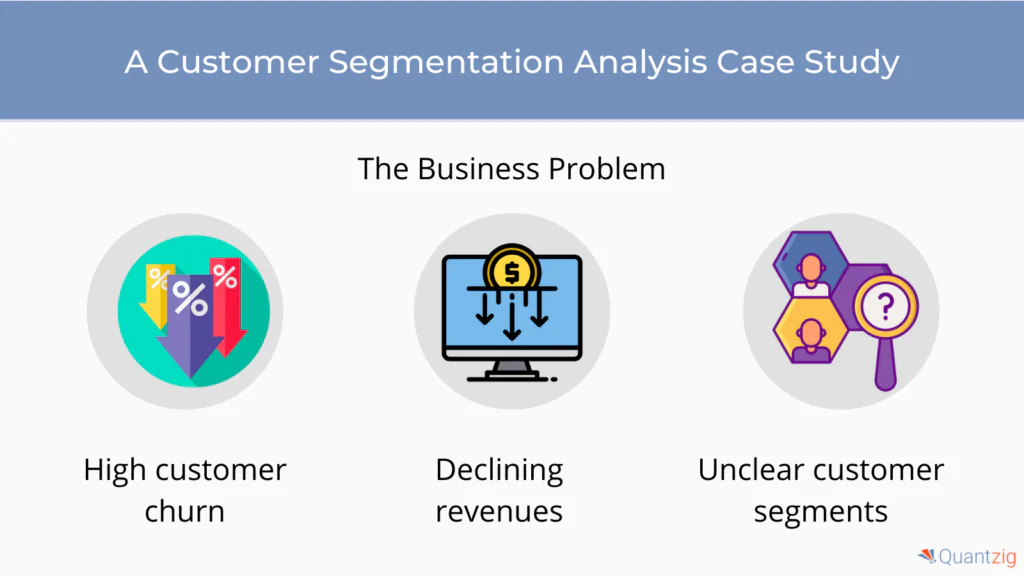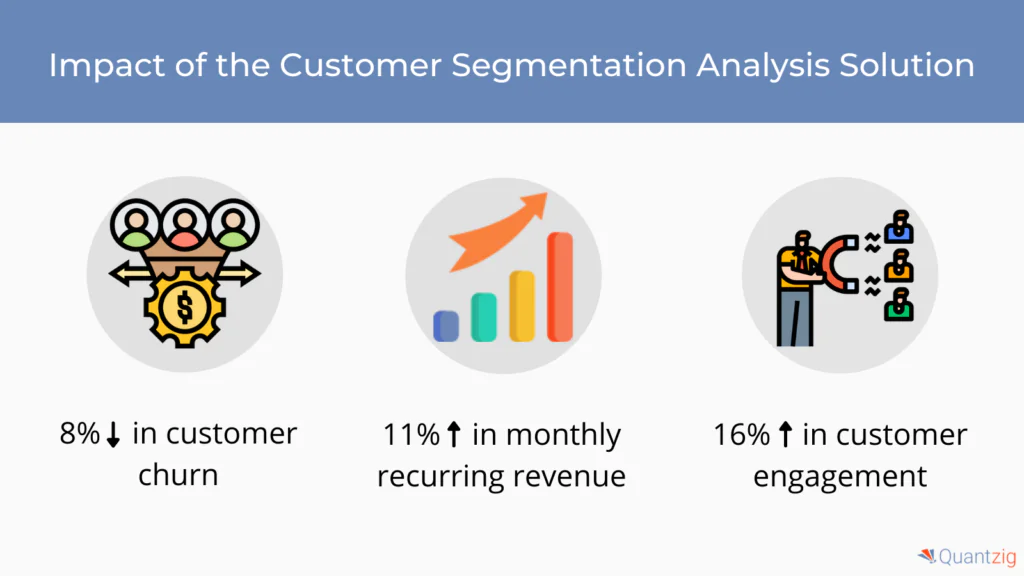In today’s competitive pharmaceutical landscape, staying ahead requires more than just innovative products—it demands a deep understanding of customer behaviors, market dynamics, and sales channels. A leading pharmaceutical supplier recognized this need and partnered with Quantzig to leverage customer segmentation and data visualization. Their goal? To predict customer behaviors, create targeted marketing strategies, and identify new opportunities for product development. By transforming existing data into actionable insights, they aimed to engage customers more effectively, boost sales, and stay ahead of the competition in an ever-evolving industry.
Key Takeaways
- Customer segmentation analysis enables targeted marketing and product innovation by identifying key customer segments, leading to increased revenue and engagement.
- Advanced analytics dashboards enhance decision-making by consolidating metrics, improving customer engagement, and reducing operational costs.
- Integrating data from multiple sources provides comprehensive insights into customer behavior, helping to forecast trends and mitigate risks effectively.
- Quantzig's tailored customer segmentation solutions empowered the client to forecast customer behaviors, reduce churn, and boost recurring revenue.
Book a demo to experience the meaningful insights we derive from data through our ai capacity planning analytical tools and platform capabilities.
Book a free demoTable of Contents
Revolutionizing Warehouse Logistics with Quantzig’s Customer Segmentation Analysis
| Particulars | Description |
| Client | A global warehouse logistics solution provider |
| Business Challenge | To identify global, vertical, and horizontal customer segments |
| Reduction in customer churn | 8% |
| Increase in monthly recurring revenue | 11% |
| Increase in customer engagement | 16% |
Client Overview and Challenges
A global leader in warehouse logistics sought to revolutionize its service offerings to address key industry challenges. Faced with longer lead times, cross-border regulatory complexities, and fluctuating transportation costs, the client struggled to enhance service efficiency across diverse customer segments. The high degree of customization and the need for intensive customer interaction further complicated their ability to develop global warehouse logistics solutions. To overcome these challenges, the client turned to Quantzig to leverage customer segmentation analytics businesses and identify distinct global, vertical, and horizontal customer segments.
Quantzig’s Tailored Solution
To address the client’s concerns, Quantzig employed a three-phased approach:
Phase 1: Data Visualization & Analytical Dashboards
We began by building a consolidated data visualization platform, integrating advanced analytical dashboards to drive data-driven decision-making. This provided the client with a clear overview of their customer segments and service efficiency metrics.
Phase 2: Integration of Disparate Data Sources
In this phase, Quantzig integrated structured and unstructured data from product billing, campaigns, net promoter scores (NPS), and competitor research. This holistic data approach enabled comprehensive insights into customer behavior and preferences across regions.
Phase 3: Customer Segmentation & Risk Assessment
By applying robust customer analytics segmentation models, Quantzig empowered the client to forecast customer performance, assess risk factors, and develop strategies to mitigate potential risks. This phase laid the groundwork for enhancing customer engagement and improving their ability to meet strategic goals.
Business Impact
Quantzig’s solution transformed the client’s ability to manage and grow its customer base, yielding the following key results:
- 8% reduction in customer churn
- 11% increase in monthly recurring revenue
- 16% increase in customer engagement through targeted marketing efforts
- 50% reduction in costs by consolidating customer data into a single source of truth
Additionally, the customer segmentation analysis identified global campaign opportunities, sparked product innovation, and refined communication strategies to target specific market needs. By categorizing customers based on their economic value and anticipating high-profit segments, the client improved product differentiation, secured a larger market share, and optimized capital allocation for future growth.
Experience the advantages firsthand by testing a customized complimentary pilot designed to address your specific requirements. Pilot studies are non-committal in nature.
Request a Free PilotBusiness Benefits of Customer Segmentation Analysis
As with any other business initiative, the end goal of ‘Customer Segmentation’ will ultimately depend on an organization’s objectives, market conditions, and a myriad of other such factors. While a majority of market players possess the market knowledge to anticipate the profitable customer groups, market leaders are aware that scaling a business is best not left to instinct or guesswork. That’s why in a customer segmentation analysis engagement, it is necessary to devise customer segment hypotheses and variables by validating them with a well-defined analytical approach.
However, if done right, the business benefits are innumerable, and it will tangibly impact your business operations by:
- Enabling you to pursue higher percentage opportunities
- Improving your product/service portfolio
- Focusing your marketing message
With the rise in digital transactions and changes in customer behaviors, businesses have a great opportunity to capture, analyze, and leverage data for better decision-making. However, capturing a complete view of customers seems to be daunting when data has to be integrated from several online and offline channels. Today, customer segmentation plays a key role in targeted marketing, lead generation, and conversion, which is one of the main reasons compelling businesses to implement a framework. In this case, the technology company was facing a decline in the sales volume of its flagship wearable devices, which accounted for over $2 million of its overall annual sales revenue. It recognized that this area of their business was underperforming. But, to address these challenges and performance issues they required in-depth customer insights, which required them to implement robust customer segmentation models.
Get started with your complimentary trial today and delve into our platform without any obligations. Explore our wide range of customized, consumption driven analytical solutions services built across the analytical maturity levels.
Start your Free Trial todayDifferent Customer Segmentation Models
Personalized marketing interactions are those that resonate with the end-users considering their individual preferences and requirements. But without the implementation of appropriate customer segmentation models, nothing can be customized. The models are generally based on the following four factors – geographic, behavioral, psychographic, and demographics. However, the way each category is utilized to build segments that propel the customer retention strategy adopted by a firm may be a key differentiator. Here are a few examples of customer segmentation models that are built around the key factors mentioned above:
- Customer segmentation based on touchpoint engagement
- Customer segmentation based on buying patterns
- Customer segmentation based on customer goals
- Client Profile
The client is a leading US-based warehouse logistics solution provider. The client is a well-known warehouse logistics and distribution company that specializes in handling import and export cargo.
After attending one of our webinars, the clients connected with one of our experts to learn what they can achieve with a superior customer segmentation analysis.
Ending Thoughts
The efficiency of warehouse logistics services has become a key differentiator between businesses in the market space. However, significant challenges exist relative to the development of warehouse logistics services for different customer segments. They include factors such as longer lead times, diversity in the regulations across borders, and the dynamic nature of transportation costs; all of which contribute to the difficulty in handling such services worldwide.
Moreover, as a service offering, the warehouse logistics solutions are characterized by extensive customizations, intensive customer contact, and dependence on cues from customer segments for enhancing service efficiency. Owing to such factors, the client wanted to leverage customer segmentation analysis and identify the global, vertical, and horizontal customer segments.
Quantzig’s customer segmentation analysis provided the client with a revolutionary framework to enhance warehouse logistics services. By identifying key customer drivers and tailoring offerings to meet market demands, the client successfully improved customer satisfaction, increased revenue, and solidified its position as a leader in global logistics.





